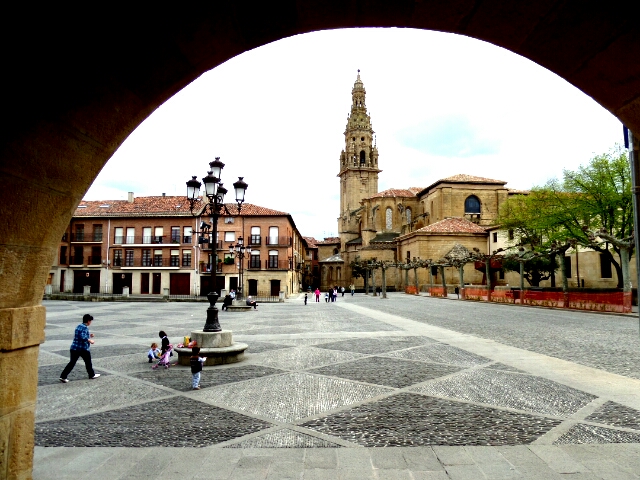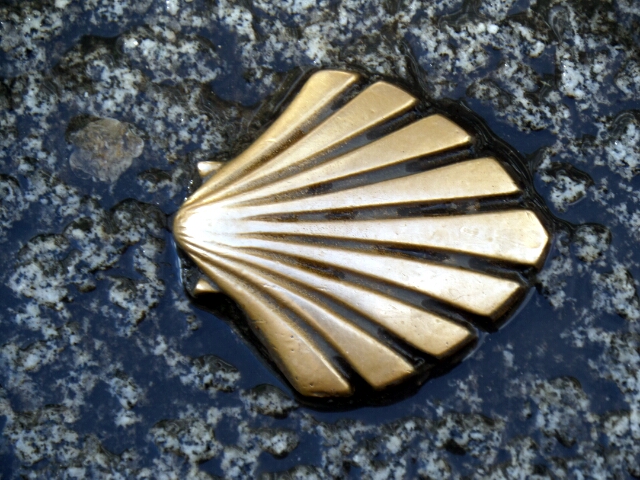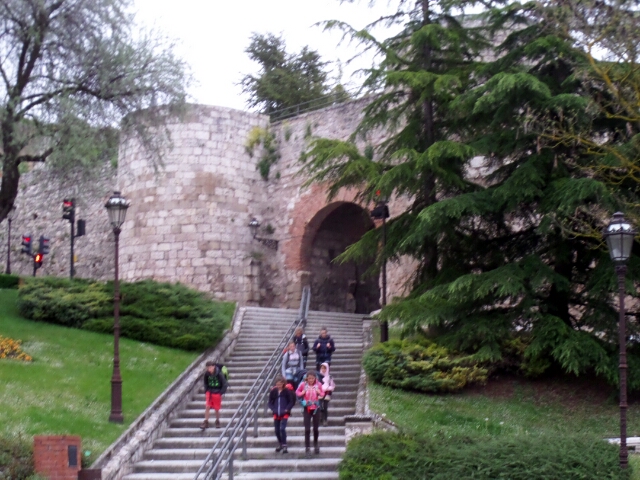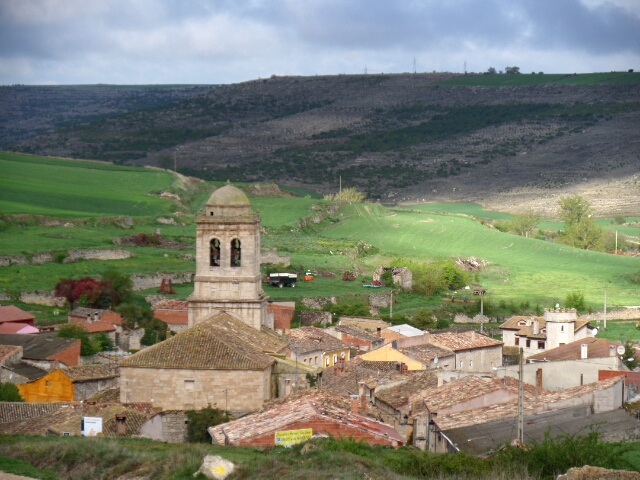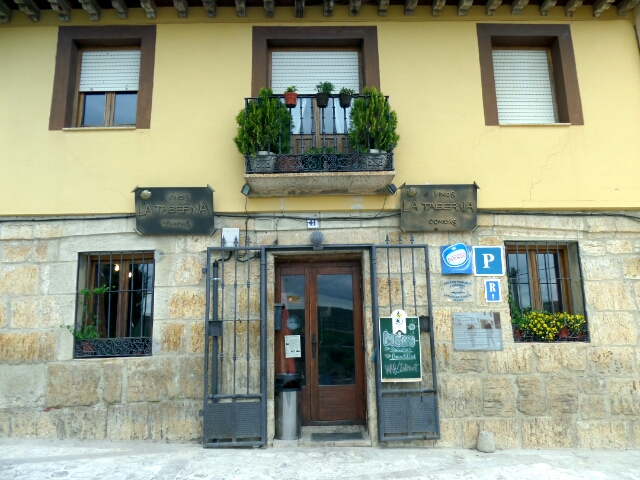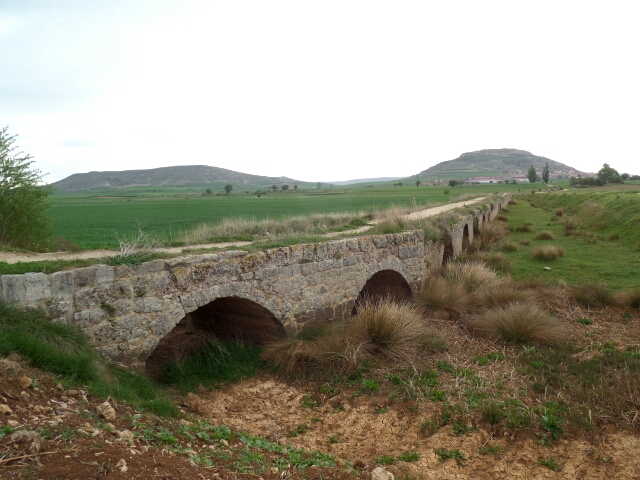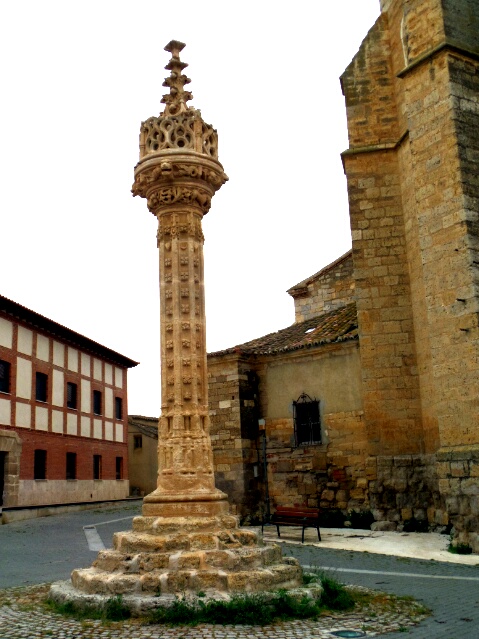Day 26 Thu 17 Apr
A short day, only 12 kilometers to Villafranca de Montes de Oca, perfect weather and the next village always in sight – our kind of walking. The town was full, no more space for another pilgrim.

Beautiful day

Tosantos church in traditional building style

Virgen de la Peña, chapel in the cliffs

Breakfast

Villambista

Villambista, fountain & Ermita

Countryside Castilla y León
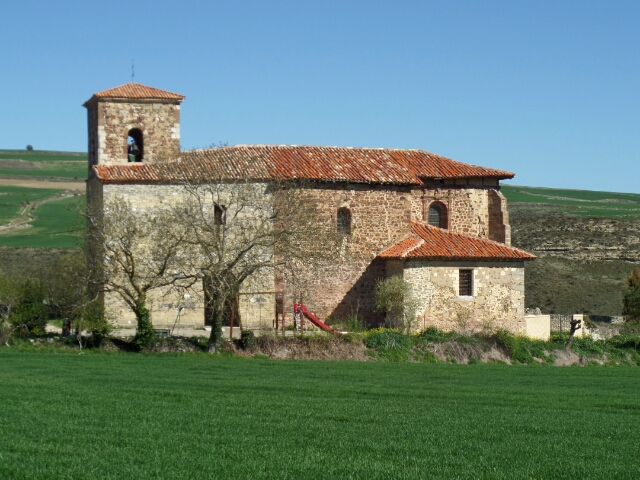
Espinosa del Camino

Romanesque burial place of founder of Burgos

Iglesia de Santiago, Villafranca Montes de Oca

Giant conch shell brought from the Philippines used as the font

Antique albergue San Antonio Abad now a hotel
Day 27 Fri 18 Apr
A very cold, clear morning, but we soon warmed up on the stiff 300 meter climb on the Way to Atapuerca, 19 kilometers. The Way takes us through forest, in days of old dangerous because of bandits. We enjoyed it; there will be plenty more wheat fields to come. Enroute is the enchanting Avés, World Heritage for its traditional wooden beamed, mud walled houses.

Walking through the forrest

Monument to the disappeared of the Civil War
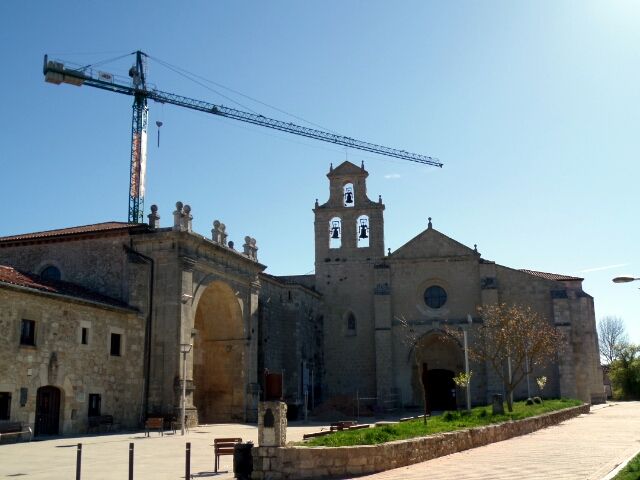
The magnificent San Juan de Ortega is being restored

The rear of the San Juan de Ortega monastery, restored

Old water fountain, still used by pilgrims

World Heritage Agés

One of the traditional wood and mud houses, Agés

Agés church with its distinctive bell tower

A pilgrim crosses an old bridge near Agés

Atapuerca

Atapuerca site of oldest human inhabitation in western Europe

Pam ponders the menu in a magnificent Atapuerca restaurant ...

... before going for the lamb

Wooden cross marks the high point before Burgos
Day 28 Sat 19 Apr
The punishment for the previous days of ideal walking is the 20 kilometers into Burgos, by far the worst of the Camino. But when you arrive …
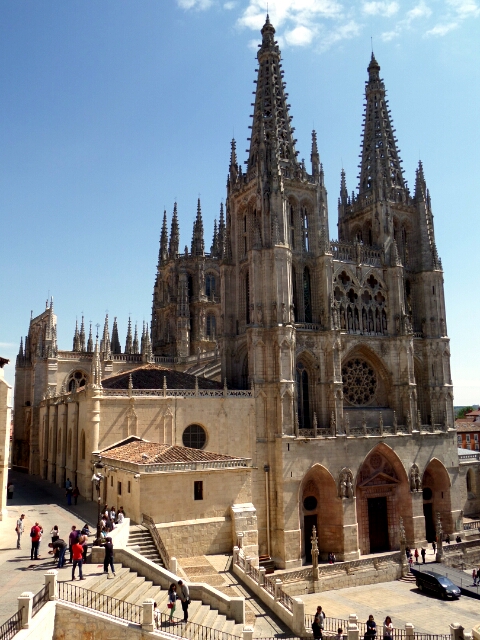
Burgos Cathedral, a religious Gothic masterpiece







